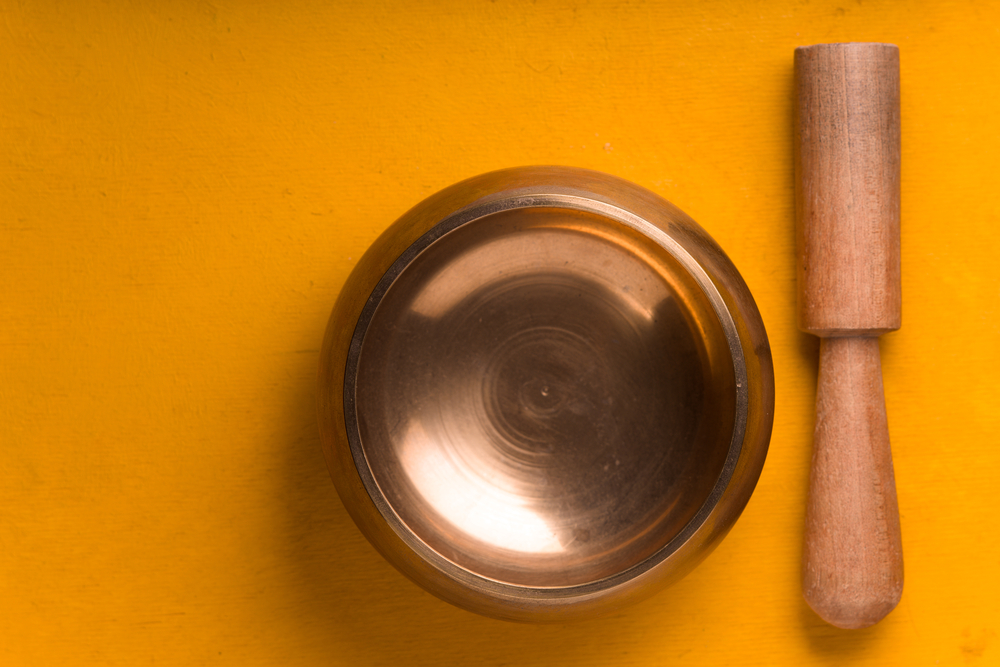
Martin Goodson
Chanting
Exercises in Mindfulness
The benefits of chanting are many! Find out how to get started in this introduction to a key component of Buddhist practice.
 ©
© shutterstock
“May this sitting and chanting benefit all sentient beings. May all beings attain Buddhahood!”
This refrain or ‘Eko’ as it is called is chanted by the jiki jitsu at the end of Zazen meditation and just prior to the group chanting The Heart Sutra and the Four Great Bodhisattva Vows.
These chants are simultaneously both offerings and dedications. As the practice of Zazen and the practice of chanting are both considered meritorious, this merit is given over for the benefit of all beings, which cements the Zen Way as the Way of the Bodhisattva. It is a reminder that the Zen practice is not for my benefit alone but for the benefit of all beings. In the Buddhist view of reality all things are inherently interconnected, thus our actions of body, speech and mind/heart have consequences for all, even if we are unaware of this truth.
Chanting bears a relation to prayer, in as much as it can be used in a petitionary way as well as an offering. Because merit is transferred, chanting can be used for specific individuals who may need support. It can be used for protection and for blessing. Quite often the Heart Sutra is used for all these tasks, with the Four Vows being used for those who have died to ‘help’ them with the onward journey. There are many chants used in the Zen school but the Heart Sutra and the Four Vows are the most commonly used.
What if I don’t really believe in multiple lives or am sceptical about karma and merit? Is it still worth including chanting in a Zen practice?
The German Kantian philosopher, Hans Vaihinger, developed a philosophy that he called ‘as if’. He wrote that even in science, because we can only say what seems to be true, for now, we can never know anything for certain. However, we can act as if something is true because it is useful or expedient to do so. He called the beliefs that guide such expedient means ‘useful fictions’. This attitude is, in many ways, not a million miles from the Buddha’s own take on truth in his teaching of the Two Truths. One truth is relative, that consisting of the Buddha’s own teachings and practices, useful for walking the way and having to be taken on trust. The other truth is absolute and has to be realised for oneself.
My argument would be that chanting lifts what would otherwise be ‘selfish’ practices such as meditation and mindfulness, out of the ‘me only’ sphere and develops an attitude that reminds us of our connection to others. If we value this connection then surely actions that support the development of this view must also be of value.
For those who would like to try chanting and who do not have access to a group to chant with, The Zen Gateway has a whole audio course on this subject. We also chant together in our online Dharma Centre at the weekly Zazen meditation meetings.
However, it might be useful to outline a few points to remember if we are starting out with this practice.
Buddhist chanting is not the same as singing, it is based on a continuous drone, produced by the throat as the breath is evenly exhaled from the body. Because of this, the in-breath has to fill the lungs to capacity, activating the diaphragm to fill the lower sections of the lungs. When we breathe normally, we tend to inflate just the upper part of the lungs and if you place one hand on your chest and one hand on your abdomen you might notice that it is only the upper part of the ribcage that moves when we breathe in and out. The diaphragm is a membrane that sits between the ribcage and the abdomen and when it is activated the stomach is pushed out and the lower lungs are filled. Keeping the hands on the chest and abdomen, take a few deep breaths. This breathing oxygenates the blood very well and you might even feel a little light-headed after doing this type of breathing. The next point is the throat, this should be as open as possible. In the monasteries, the monks swallow bowls of ramen, soup with noodles; to gulp them down the throat needs to be as open as possible and it is this openness that is also used when we chant!
Taking a deep breath into the lower abdomen and opening the throat, we can chant a syllable. When we practice this sound, we use the Chinese syllable ‘HO’, which is a word for ‘Dharma’. When chanted it sounds more like the word ‘HAW’, as in ‘hawthorn’. When chanted it would be ‘HAAAAAAAAAAAAAAAAAW’.
The sound should be even, and last for the full duration of the exhalation, only stopping when the lungs are empty. The next in-breath is taken in and the sound is repeated.
Once this sound can be kept going for several breaths, then you might like to try putting the syllables of the chant onto this drone but do not lose the drone. Another tip is to soften the consonants and chant more on the vowels. This is because vowels - a, e, i, o, u - open up the throat whereas some consonants break up the sound and introduce silences - p, d, t, - for example.
This may seem like a lot to keep in mind to begin with but just start with the breath and the drone and then listen to the chanting audio course and join in with the chanting to see how you get along.
Happy chanting!




